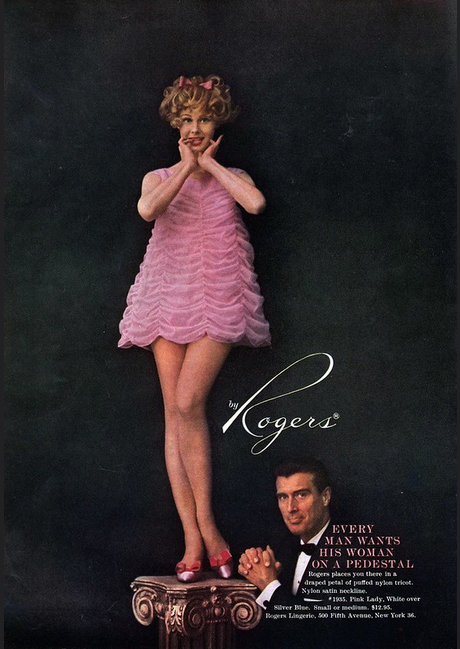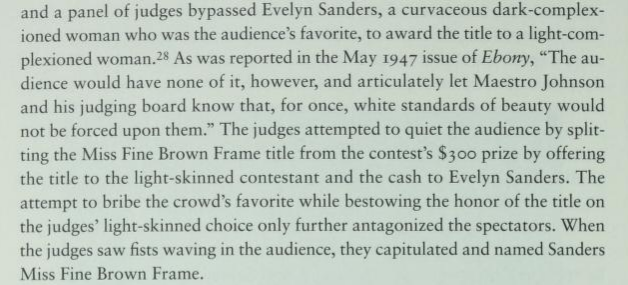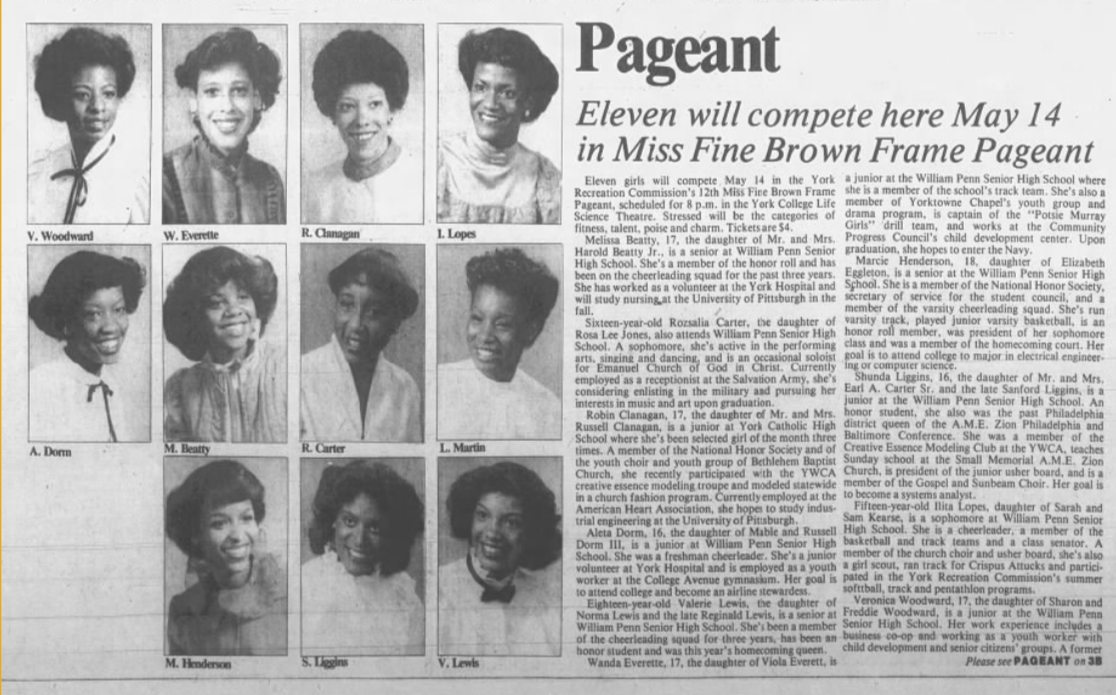November 2022
November 10, 2022
Signorina Grandi Firme
Le Grandi Firme (The Great Signatures) was an Italian literary magazine published as a fortnightly review from 1924 to 1936, and as a weekly review from 1937 to 1938. The weekly edition featured cover artwork by Gino Boccasile that always depicted an attractive young woman in a tight dress. These cover women became known as the "Signorine Grandi Firme."
The Signorine Grandi Firme became so popular that they inspired a national beauty contest to find a real-life "Signorina Grandi Firme," or Miss Grandi Firme. This was one of Italy's first beauty contests. It was won by 19-year-old Barbara Nardi.
Unfortunately I haven't been able to find any photos of Barbara Nardi, even though she went on to appear in a number of Italian movies.

Soon after the contest, Mussolini ordered the magazine to cease publication. Apparently he found its popularity to be a threat.

The beauty contest also inspired a swing song, Signorina Grandi Firme, sung by Carlo Moreno and the Trio Lescano.
More info: listal.com, MissItalia.it
Update: Paul succeeded in finding a photo of Barbara Nardi in an old Italian film magazine.

"The beautiful smile of Barbara Nardi"
Cinema - Apr 23, 1940
Posted By: Alex - Thu Nov 10, 2022 -
Comments (3)
Category: Awards, Prizes, Competitions and Contests, 1930s
Charles Garland and his Love Farm
Elon Musk, stand back!If you inherited a ton of money at a young age, you too might be confused about how to live. At first, you might radically decide not to accept the fortune. Then, you might decide to use it for charitable purposes. Finally, you might opt to establish a free-love commune.
That's the path that one Charles Garland took. Read his whole story at Wikipedia.
After his separation from his wife, Garland established two successive agricultural communes, or "colonies of idealists", both named April Farm.[19] The first April Farm, in which Garland lived from January 1922, was at North Carver, Massachusetts.[22] In 1924, Garland moved to a new "April Farm" in Lower Milford Township, Pennsylvania.[19]
Garland scandalized polite society by inviting young women to live with him at these colonies, where he planned to "work out the problems of life".
Naturally, newspapers had a field day with all this.

Posted By: Paul - Thu Nov 10, 2022 -
Comments (3)
Category: Money, Communes, Utopias, and Other Alternative Societies, Public Indecency, Bohemians, Beatniks, Hippies and Slackers, 1920s
November 9, 2022
Using an atomic water cannon to change the earth’s orbit
Back in the early 1970s, engineer William Peterson proposed builing a gigantic, atomic-powered water cannon in the Mojave Desert and blasting ocean water out of it. He claimed this would not only create rain to water the desert, but would also change earth's orbit, in a beneficial way. Eventually, he said, we could even use the cannon to move the earth to a new solar system!I've got two questions: 1) Would salt water shot up into the atmosphere come back down as fresh water? and 2) How big would you have to make something like this to actually move the earth?

Logan Herald-Journal - Nov 23, 1971
Text below from a Nov 1971 UPI article:
By Robert E. Sweet
SEATTLE (UPI) — William E. Peterson wants to erect what amounts to a giant atomic water pistol in the Mojave Desert, shoot it off and change the orbit of the earth.
Or, as Peterson himself once put it in an edition of a local Rotary Club bulletin which he edits: "Some weirdo hereabouts is campaigning for a project to fly the earth."
Peterson is a 40-year-old structural engineer who works mainly on dams and bridges. He has a sense of humor and can understand why some people might think he's a crackpot. But he is dead serious about his "earth sailing" project," which he has tried to sell to everyone from President Nixon to the Sierra Club to private foundations.
PLAN DETAILED
Peterson's plan is to build a nuclear cannon, a mile in diameter at the base, tapering off to a narrow nozzle on top. With an atomic blast that he estimates would be equal to about one million tons of TNT he would force a piston mechanism to shoot sea water out the top of the cannon at terrific speed.
He figures about 10 per cent of the water vapor would escape earth's gravity and the spray would nudge the planet's orbit in the same way jets propel a spacecraft.
The water that remained in the atmosphere, Peterson said in an interview, would act like a "giant sprinkler system" and create rain to water the Mojave Desert.
CITES PREDICTIONS
A new orbit would improve the world's climate, ease pollution problems and "put some life into Death Valley," he said.
"Some reputable scientists say we're in for another ice age in the year 2000," Peterson said, in an interview, noting that others predict all sorts of ecological disasters on the horizon.
"So some day — and maybe not too far in the future — we're going to have to know how to control the orbit to maintain at least the quality of life we know now.
"If we can't do it this way sailing "Our Great Ship Earth," how are we going to do it?"
Peterson said other potential benefits of his proposal include: — Turning the globe into a giant spacecraft and flying it to another sun when our sun burns out, which scientists estimate will be in about 5 billion years.
— Applying the same technology to other planets to bring them closer to the sun for more living space for earthlings.
— Replacing dams with sea water cannons for the sake of electrical power.
— Desalinating sea water.
EASE NATIONALISM
— Easing the excesses of nationalism by fostering a sense of international cooperation in working on the project.
Peterson said the cannon would not necessarily have to be used to alter the earth's orbit. A smaller blast of water would be just a rainmaker and the water that did not leave the structure could drive power pistons to supply electric energy. Or, a nozzle at the top could be directed in such a way as to squelch forest fires.
His plan has been a personal project with Peterson for 13 years, but only in the last few years has he begun promoting it. Among those to whom he has divulged his plan are: President Nixon, the National Aeronautics and Space Administration (NASA), the U.S. Department of Commerce, the Atomic Energy Commission, the Sierra Club, Sen. Henry Jackson, D-Wash., Washington Gov. Dan Evans, and a few private foundations.
REJECTED BY NASA
NASA rejected the plan because its political and ecological implications were beyond the scope of the agency. H. Dale Grubb, NASA's assistant administator for legislative affairs, wrote Peterson:
"It would be presumptuous and inappropriate for one nation or an agency of one nation to speculate on the accomplishment of such a project."
Brock Evans, a spokesman for the conservation-dedicated Sierra Club, replied: "Death Valley, as you know, is a national monument at the present time. Our viewpoint is that we don't always need to make the desert bloom."
Donald F. Moore, an assistant administrator of the U.S. Department of Commerce, Environmental and Science Services Administration, wrote Peterson:
"The President has asked me to review the proposal ... and give you my comments.
"Your idea of changing the orbit of the earth as a means of controlling climate and distribution of rainfall is most intriguing and certainly represents highly creative thinking on your part.
ELASTIC MEDIUM
"Experience has shown, however, that the atmosphere is a very elastic medium, and thus instead of blowing out into space like the exhaust from a rocket, it absorbs the energy and momentum from a nuclear blast and eventually returns it to the earth so that no actual motion of the earth takes place."
Peterson answered these doubts saying: "actually it would be impossible to draw this conclusion since no one has thought of the type of device I have proposed."
He believes his proposal "warrants a feasibility study," even if admittedly it is a "real futuristic idea."
"I don't feel the (federal officials) gave it a fair shake. They just discounted the ideas and did not by any means prove they wouldn't work."
Peterson said he is gaining support locally and would attempt to win voter approval by going from state to state, campaigning.
And, he added, at least his children are convinced the plan would work — they call him "Earth Pilot No. 1."
Posted By: Alex - Wed Nov 09, 2022 -
Comments (4)
Category: Really Bad Ideas, Spaceflight, Astronautics, and Astronomy, Environmentalism and Ecology, 1970s
Follies of the Madmen #546
Many more images in this campaign here.
Posted By: Paul - Wed Nov 09, 2022 -
Comments (3)
Category: Stereotypes and Cliches, Advertising, Women, Twentieth Century
November 8, 2022
The Aquamen
The Aquamen are part of Machtiern, a French theater company. They wander around in public wearing fishbowl helmets, with live fish swimming around inside the helmets.Details from the Telegraph:
But wearing a fishbowl is not for the faint-hearted, Mr Manini told the Telegraph.
"It's a bit like wearing a reverse diving bell," he said, adding that it took years to perfect to avoid leaks around the neck with each bowl and suit moulded to the individual performer.


Posted By: Alex - Tue Nov 08, 2022 -
Comments (3)
Category: Performance Art, Fish, Headgear
Miss Fine Brown Frame
A beauty contest inspired by a song! It started in 1947, but I'm not sure when it ended. But it was still active at least till 1983, as you can see below.Source of text.



Posted By: Paul - Tue Nov 08, 2022 -
Comments (0)
Category: Awards, Prizes, Competitions and Contests, Beauty, Ugliness and Other Aesthetic Issues, Ethnic Groupings, Music, 1940s, 1980s
November 7, 2022
Asneezia, Part 2
Two weeks ago I posted about 'Asneezia,' which was the name that a doctor in India (G.D. Shukla) gave to the condition of being unable to sneeze. His non-sneezing patients also suffered from mental illness. He published his report about Asneezia in 1985.I was somewhat skeptical about the reality of Asneezia. But yesterday, purely by chance, I came across the newspaper story below from 1958 about doctors at a New England psychiatric hospital who noted the odd fact that their patients never suffered from allergies, and so never sneezed. "If you hear a sneeze," one of them said, "you can know it's a staff member's."
As far as I know, Dr. Shukla (reporting about Asneezia in 1985) was unaware of this earlier report from 1958. But having two independent reports of a connection between not-sneezing and mental illness, from different times and different cultures, would seem to confirm the reality of the condition.

Boston Globe - June 16, 1958
Posted By: Alex - Mon Nov 07, 2022 -
Comments (0)
Category: Health, Mental Health and Insanity
Hot Meal Vending Machines
In 1968 (perhaps even earlier), an inventor had the notion of serving hot meals from a vending machine.

Lo and behold, today his dream is a reality. Would you sample such fare?
Posted By: Paul - Mon Nov 07, 2022 -
Comments (3)
Category: Food, Technology, 1960s, Asia
November 6, 2022
Dinner music for people who aren’t very hungry

Cosmopolitan - Oct 1957
Posted By: Alex - Sun Nov 06, 2022 -
Comments (3)
Category: Music, 1950s
Betty Furness for Westinghouse
The weirdest thing about this commercial is the incredibly tiny waist of almost 40-year-old Betty Furness. I can't take my eyes off it.
NOTE: the first video runs slow, at least for me. Best to let it download entirely before hitting play.

Posted By: Paul - Sun Nov 06, 2022 -
Comments (5)
Category: Body, Domestic, Television, Advertising, 1950s, Women, Natural Wonders
| Get WU Posts by Email | |
|---|---|

| Who We Are |
|---|
| Alex Boese Alex is the creator and curator of the Museum of Hoaxes. He's also the author of various weird, non-fiction books such as Elephants on Acid. Paul Di Filippo Paul has been paid to put weird ideas into fictional form for over thirty years, in his career as a noted science fiction writer. He has recently begun blogging on many curious topics with three fellow writers at The Inferior 4+1. Chuck Shepherd Chuck is the purveyor of News of the Weird, the syndicated column which for decades has set the gold-standard for reporting on oddities and the bizarre. Our banner was drawn by the legendary underground cartoonist Rick Altergott. Contact Us |

